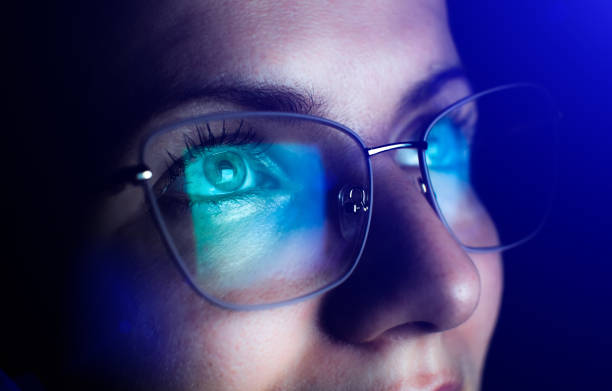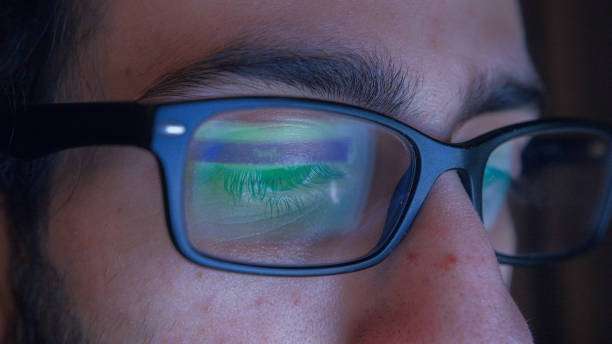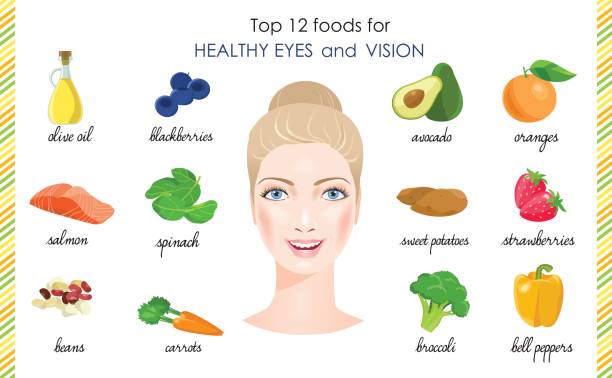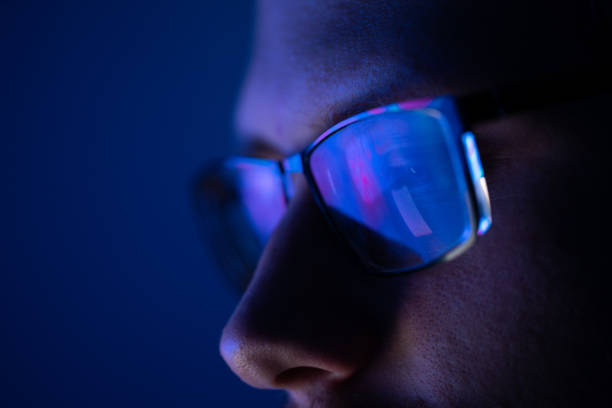Blue light surrounds us every day. From smartphones to laptops, tablets, and LED lights, this type of light plays a significant role in our modern lives. But have you ever thought about how it might be affecting your eyes? Research suggests that too much exposure to blue light could cause eye strain and even long-term issues. Let’s dive into what blue light is, how it impacts your eyes, and, most importantly, what you can do to protect them.
What Is Blue Light?
Blue light is part of the visible light spectrum. It has a short wavelength and produces high energy. While it naturally comes from the sun, most of the exposure we get today comes from digital screens and energy-efficient lighting.
Unlike other types of light, it scatters easily, making it harder for your eyes to focus. This is why prolonged exposure to screens can cause discomfort or blurry vision.
How Does Blue Light Affect Your Eyes?

1. Digital Eye Strain
Have you ever noticed your eyes feeling tired after staring at a screen for too long? This is known as digital eye strain. Symptoms include dry eyes, headaches, blurry vision, and difficulty focusing. It contributes to this strain by forcing your eyes to work harder to process the high-energy wavelengths.
2. Disruption to Sleep Patterns
It has a powerful effect on your body’s internal clock, also known as your circadian rhythm. It suppresses melatonin production, the hormone responsible for making you feel sleepy. This means spending too much time on your phone or computer before bed can lead to trouble falling asleep and staying asleep.
3. Potential Risk to Eye Health
Some studies suggest that long-term exposure to blue light might harm your retina, the part of your eye responsible for processing light and sending signals to your brain. While more research is needed, there’s concern that excessive exposure could increase the risk of macular degeneration, a condition that leads to vision loss.
Ways to Reduce Blue Light Exposure

Protecting your eyes from blue light doesn’t mean you have to give up screens altogether. Here are some simple strategies to help you manage exposure and keep your eyes healthy.
1. Follow the 20-20-20 Rule
To prevent eye strain, take a break every 20 minutes. Look at something 20 feet away for at least 20 seconds. This gives your eyes a chance to relax and reduces strain from focusing on a close screen for too long.
2. Use Blue Light Filters
Many devices now come with built-in blue light filters. These settings, often called “night mode” or “blue light reduction,” reduce the amount of it emitted from your screen. If your device doesn’t have this feature, you can download apps or purchase screen protectors designed to block blue light.
3. Wear Blue Light Blocking Glasses
Special glasses designed to block blue light are widely available. These can be especially helpful if you spend several hours a day in front of screens. Many styles are affordable, and they can significantly reduce eye discomfort.
4. Adjust Your Lighting
Switch to warm-colored lighting in your home or office, especially during the evening. Avoid sitting in dark rooms with a bright screen, as the contrast can strain your eyes. Instead, use a soft desk lamp to reduce glare and improve visibility.
5. Limit Screen Time Before Bed
To help your body prepare for sleep, try to stop using digital devices at least an hour before bedtime. Instead, consider activities like reading a book or practicing relaxation techniques to wind down.
Foods and Habits That Support Eye Health
Keeping your eyes healthy goes beyond reducing blue light exposure. A balanced diet and good habits can strengthen your eyes and protect them from damage.
1. Eat Eye-Friendly Foods

Certain nutrients play a vital role in maintaining eye health. Include these in your diet:
- Vitamin A: Found in carrots, sweet potatoes, and spinach, this vitamin supports good vision.
- Lutein and Zeaxanthin: Found in leafy greens like kale and spinach, these antioxidants protect your retina.
- Omega-3 Fatty Acids: Found in fish like salmon, these help reduce dry eye symptoms.
2. Stay Hydrated
Dry eyes are a common issue for people who spend a lot of time looking at screens. Drinking plenty of water helps keep your eyes moist and reduces discomfort.
3. Get Regular Eye Exams
Visiting an eye doctor regularly ensures any potential issues are caught early. They can also recommend customized solutions for managing blue light exposure.
The Future of Blue Light Research
While concerns about blue light exposure are valid, it’s important to understand that research is still ongoing. Scientists are working to determine how much blue light is too much and whether it poses long-term risks. For now, taking preventive measures is the best way to protect your eyes and maintain healthy vision.
Final Thoughts
Blue light is an unavoidable part of modern life, but its effects on your eyes shouldn’t be ignored. By making small changes to your habits, you can reduce eye strain, improve your sleep, and protect your vision for the future. Follow the tips outlined above, and don’t forget to give your eyes the care they deserve.
By following these strategies, you can enjoy the benefits of technology without putting your eye health at risk. Remember, taking breaks, using blue light filters, and maintaining a healthy lifestyle can go a long way in keeping your eyes comfortable and healthy.

